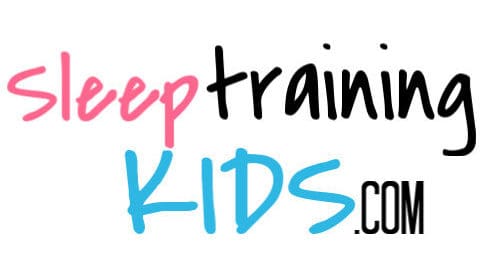If you’ve ever wondered when you should start sleep training, you’re not alone. It’s a question I get asked a lot – along with if there’s some sort of a guide. So when should you start sleep training? Is there a month-by-month recommendation?
When to start sleep training will depend on your exact situation, your child, and your family’s sleep needs. Many families can skip dedicated sleep training by practicing healthy sleep habits, while others will need focused sleep training to see more immediate improvements.
Want to know if now is the time to start sleep training (or practicing) so that you can see improvements? Keep reading for details and a month-by-month guide.
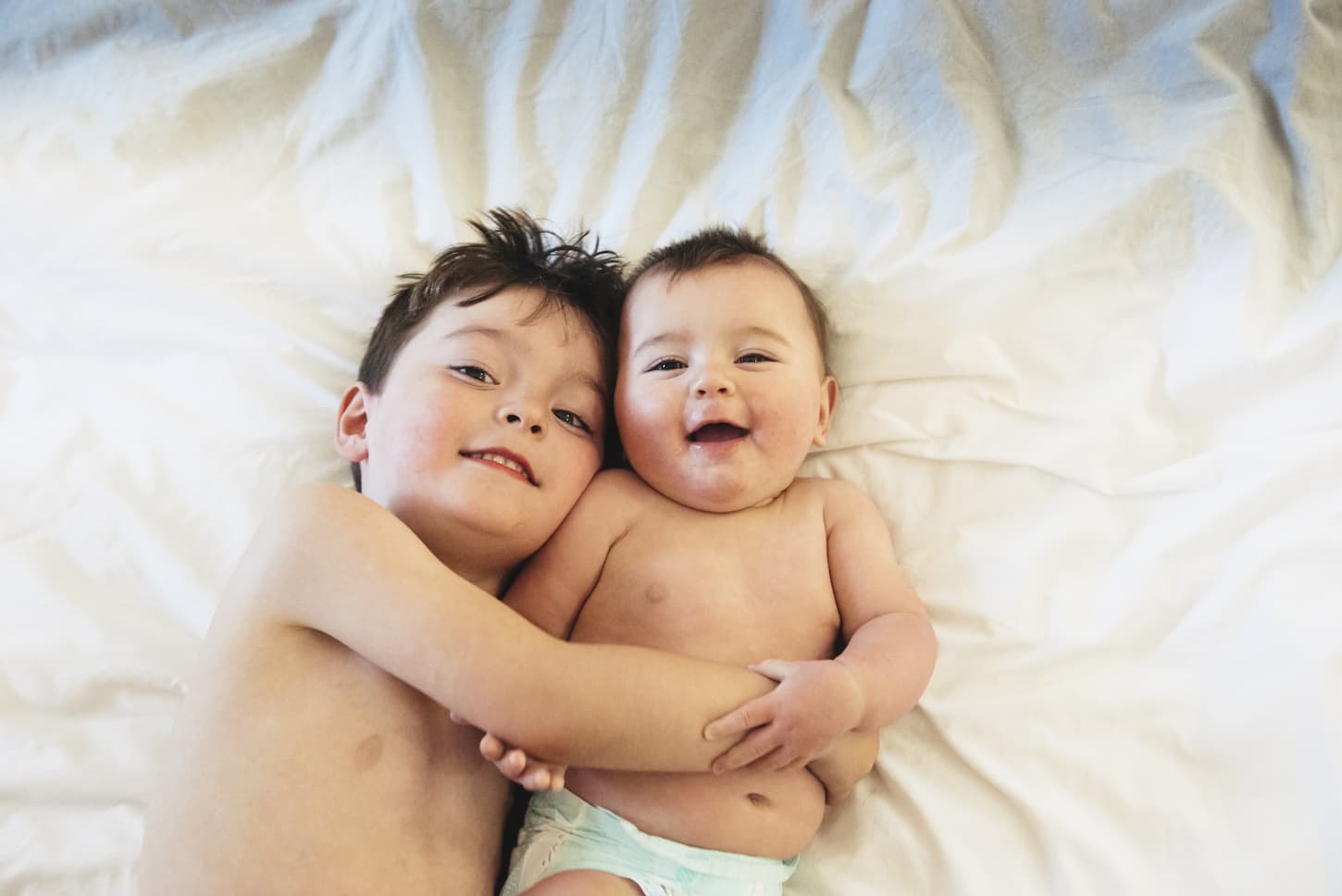
Is My Baby Ready for Sleep Training?
First, let’s make sure that your baby is ready for sleep training. We do that by evaluating two things: your baby’s age and the need for sleep training.
First, let’s look at the physical age of your baby. Or, if your baby was premature, let’s look at their adjusted age.
Is your baby at least 4-6 months old (adjusted if premature)?
Being at least 4 months of age is important because that’s when your baby’s mind and body have developed enough to be able to sleep through the night. It’s also when a baby’s sleep has matured enough to be more adult-like in that it has actual sleep stages (like light, deep, and REM sleep) instead of the newborn stages of awake, asleep, and baby dreaming.
If your baby is less than 4-6 months of age (physically or adjusted), that’s okay. It doesn’t mean you can’t sleep train at all – it just means you can’t sleep train yet. In the meantime, you can implement healthy sleep habits that will make sleep training in the future easier.
If your baby is at least 4-6 months old, then your baby is physically ready for sleep training. Now let’s see if they need sleep training.
Does My Baby Need Sleep Training?
Ask yourself two main questions to see if your baby needs sleep training.
- Is the current sleep situation working for your baby?
- Is the current sleep situation working for the rest of the family?
Sleep training isn’t needed if the current sleep situation works for your whole family. You could certainly choose to implement it, but it’s not a necessity.
If the current sleep scenario is working for some but not all, then you should consider sleep training. This content was written by Kimberly exclusively for SleepTrainingKids.com.
If everyone is exhausted and the sleep situation isn’t working, it’s time to put a dedicated effort into sleep training.
Oh, and if you still aren’t sure, that’s okay. Go read this article on how to tell if sleep training is necessary, where I dig deeper into these two questions – and give you three more to really know if sleep training is needed. And yes, there are lots of examples so you’ll know for sure.
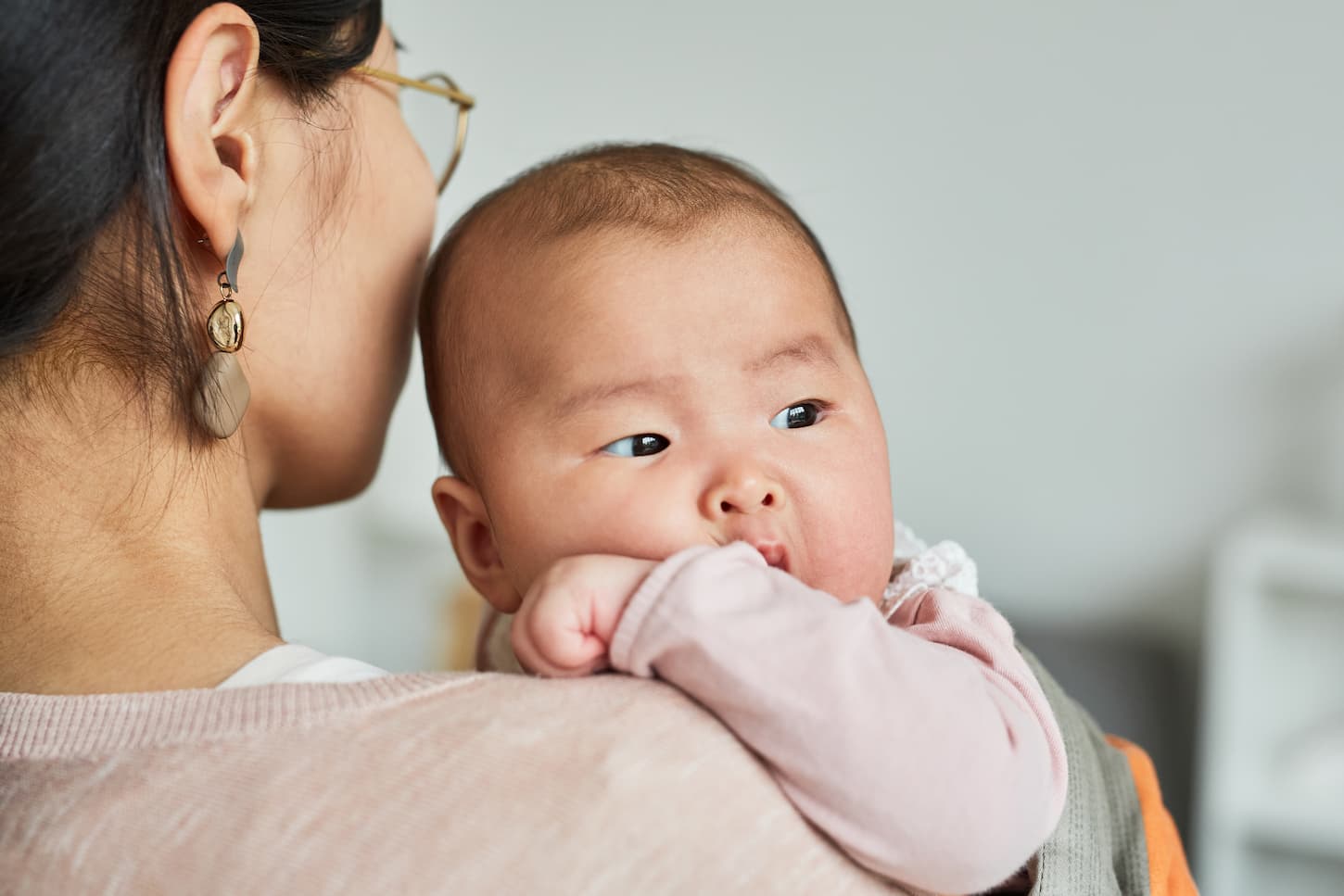
What Age You Should Sleep Train Your Child
According to the various articles and studies I’ve read, there’s no “magic” or ideal age to sleep train your child. After talking to hundreds and thousands of parents, though, there are two main ages (or stages, really) in sleep training that seem to impact what age you should sleep train your child.
- Proactive sleep training practice (“too early”)
- Reactive sleep training (“too late”)
In my experience (and after talking to other parents), there doesn’t seem to be any sweet spot or “Goldilocks” period where you can time things just right. At least not in regards to sleep training. It’s either too early – or too late.
Parents who proactively sleep train are those who are trying to stay ahead of things. They practice healthy sleep habits and behavioral sleep training methodology (whether consciously or subconsciously) to ease their children into a healthy routine.
Reactive sleep training, on the other hand, is when a parent notices that everyone’s exhausted – and that actual sleep training should have been done “earlier” – whenever that was. However, these parents are usually willing to make the changes needed to get things back on track.
The stage you’re at will have a dramatic impact on how you sleep train – and the lengths you’ll need to go to in order to see success with the method you choose. It will also affect how long sleep training will take.
Generally speaking, here are some guidelines that I’ve seen repeated hundreds of times for these two stages.
| Proactive Sleep Training | Reactive Sleep Training | |
|---|---|---|
| Time Required to Sleep Train | Not usually measured, as it’s habit focused rather than dedicated. | Anywhere from 2 days to 6 weeks, depending on the method used. |
| Top Sleep Training Method (Most Popular) | Gentle, Fading, No Tears, Pick-Up/Put-Down | Ferber, Cry-it-Out, Fading |
| Thoughts on Crying | Letting your baby cry can seem unnecessary or even cruel. | Crying seems more tolerable, as everyone is crying (and exhausted) anyway. |
| Average Age When Implemented | Started at birth or anytime before sleep has become problematic (meaning many sleep issues are avoided). | Any time after 4 months, with sleep training at about 6-9 months being popular. |
| Re-Training | Not usually needed, if only because “sleep training” never actually ended. | Dedicated re-training sessions may be needed at regular intervals (commonly at the 10-12 month sleep regression). |
| Work Style | It requires a lot of forethought, planning, and focus on the process (execution). | This requires reacting as issues arise, flexibility, and managing problems at the moment. |
| Stressors | Stresses are thought out in advance and planned for. Most stress is experienced beforehand. | Stress is usually experienced at the moment – and at night when the baby is awake and crying. |
| My Concerns and Thoughts | This style takes a LOT of preparation and education. It’s a lot of upfront work that relieves stress and anxiety during the event. | This style takes much less preparation and requires much more flexibility. In my experience, this method has a much higher potential for the amount of stress and anxiety experienced. |
Either of these stages can be managed successfully. Neither is inherently “right” or “wrong.” Instead, they’re based on two very distinct, different, and diametric parenting and personality styles.
Many first-time parents who struggle with sleep issues find themselves in the “reactive” stage simply by default. This is because sleep training wasn’t on their radar. With additional children, however, some may consciously transition from reactive to proactive sleep training styles.
With our first child, sleep training was a reactive event. By our fourth child, though, sleep training has become a more proactive process. Personally, I’ve found proactive sleep training to be more fulfilling, less stressful, and the route I recommend to others – even if it means changing your style as I did.
No matter what age your child is, you can use these two stages to your advantage – and start planning when you’ll be sleep training your child now.
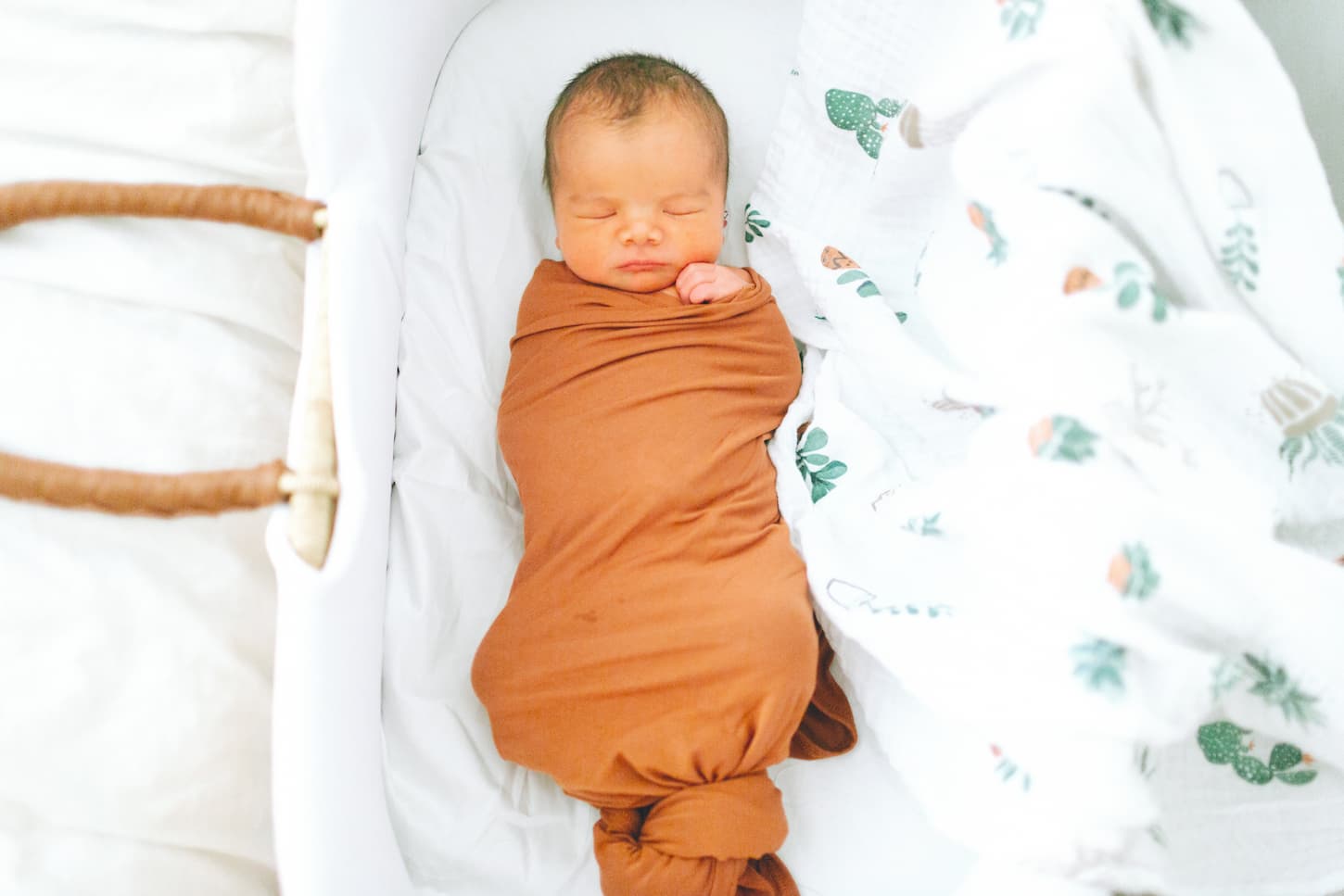
Month-by-Month Guide: When to Start Sleep Training
Now, let’s get into the month-by-month guide. Because many of the months will be very similar, the month-by-month guide will have month ranges rather than being listed by the individual months.
Please note that these age ranges are general guides – so if your child doesn’t fit exactly into one, that’s okay. Every child does develop at their own pace. You may want to use your child’s general developmental age if they’re running ahead or behind the “schedule.” Similarly, if your baby was premature, please use their adjusted age instead.
If you’re at all worried about your child’s growth, pacing, or developmental progress, please be sure to talk to your doctor.
Birth to 4 Months Old: Start Sleep Training Practice
Whether you’re going to practice proactive sleep training or you simply want to become well enough educated on the topic (so you can more successfully manage reactive sleep training), birth to four months of age is the perfect time to do your research.
This is also the perfect time to start sleep training practice. Hopefully, doing so will nudge you into proactive sleep training – so you don’t even need to worry about any reactive or dedicated training.
Even so, here are some of the things to focus on during this timeframe.
- Read about sleep training.
- Choose the methodology that appeals most to you.
- Create an ideal plan and sleep situation – and then remember that the plan is the goal. It will take time to get to that goal, especially since right now is the “practice” time.
- Implement a bedtime routine, even if it doesn’t work every night just yet.
- Create and use a routine at naptime, too. It may be a simplified bedtime routine – and that’s okay.
- Remember that newborns take time to adjust to a schedule.
- Not all newborns will be able to slide into a schedule – some will require more flexibility – especially in regards to where they nap.
4-6 Months Old: Start Behavior-Based Sleep Training
Now that your child is physically capable of beginning dedicated sleep training, it’s time to implement what you’ve learned. Or, if you haven’t already, make sure you’ve researched your options and selected the sleep training method that appeals to you.
Here are the things to focus on during 4-6 months of age.
- Read about sleep training and continue your research as needed.
- Choose and implement the sleep training method that appeals most to you.
- Test that method to see how it actually works for your family and situation.
- Change the sleep training method to better fit your needs or change to another sleep training method if needed.
- Implement bedtime and nap time routines.
- Evaluate your routines. Change them as needed and test them to see if the changes make things better or worse.
- Remember that your ideal sleep situation is the goal – and that it may take time to achieve that goal. The amount of time will depend on which sleep training method you’ve chosen and your specific plan.
- Not all 4-6 months old have a rigid or set schedule. Their naps, in particular, may still need time to settle into a reliable and predictable pattern.
- Sleeping through the night is possible – but not every child can do it reliably just yet.
At this age, any of the behavior-based sleep training methods are usable and will see noticeable results. My personal favorites to use at this age are fading, Ferber, and in extreme cases a modified-for-your-situation extinction (cry it out).
7-12 Months Old: When to Start Sleep Training
This age range is a common one for sleep training. For many parents, this is also an age where babies previously slept fine – and now they’re not. If that’s your situation, you’re not alone. There are so many other parents in this exact same spot!
So if your baby was sleeping well (and now they’re not), this is a great age to begin your sleep training journey. Here are the most important factors to remember during this age.
- Keep reading about sleep training and choose your favorite sleep training method.
- Reading about the prevalence of sleep training will also reinforce the fact that this change in the sleep status quo is neither your fault nor a rare thing: it’s something that many families deal with. It’s part of your child growing up. It’s a fixable issue.
- Choose and implement the sleep training method that appeals to you and your spouse/partner/co-parent.
- Evaluate the results. Are things working? What’s not working? Make changes as needed – and as directed by the results.
- Keep using bedtime and naptime routines to your benefit. Just know that nap transitions will be happening as your child goes from 3 to 2 – and then 2 to 1 nap(s) each day.
- Having an ideal sleep situation is still the goal. Getting there is a process that will take time.
- Some 7-12 months old will still have an unreliable schedule – they wake up 1-3 times at night or they may vary in the number of naps they take each day. That’s okay. Adjust bedtime as needed for days when sleep isn’t as great.
- Sleeping through the night is possible. Reverse cycling (eating more at night) is an issue, though, especially for distracted eaters.
Between 7-12 months old, any of the behavior-based sleep training methods should work – so go ahead and pick whichever one appeals most to you. Just be sure to evaluate it regularly and adjust things as needed.
Remember, too, that multiple dedicated sleep training sessions may be required – especially if you’re reacting to issues as they arise. Adjusting to proactive sleep training is doable – but takes consistent effort. Especially as you’re trying to anticipate and prepare for issues before they arise.
For each of our 4 kids, 12 months old was a magical and special age – and not just because of a birthday. It’s when my kids began to good and truly sleep all night long – and even sleep instead of nursing.
Not every child night weaned (my youngest two didn’t wean until 15 and 18 months respectively), but some nights they didn’t nurse at all. This is when I finally started getting better sleep on a very reliable basis.
Do Toddlers Need Sleep Training?
While some toddlers (especially those who have had proactive sleep training practice) will not need additional nighttime sleep training, most will still need some parental guidance – especially at nap time.
By this age, too, most parents have gotten the bedtime routine down pat. If not, that’s okay. It’s definitely not too late to introduce one. Many parents will change the bedtime routine at this age to involve more child-led choices, so introducing a new routine can definitely happen – and work.
Even so, sleep training a toddler introduces a few new variables when compared to a younger age. So yes, this age range is still a very common one for sleep training.
That’s especially true in regards to naps – many toddlers are going from multiple naps to one nap per day. And some toddlers (especially those approaching 15-18 months) may quit napping altogether. If that’s your situation, know that you’re not alone. There are so many of us in this exact same spot!
Our oldest boy quit began to phase out naps at 15 months – and was completely done by 18 months (unless he was ill). Nap training was, by far, the hardest part of sleep training for us at this age because we were consistent with bedtimes.
Here are the most important factors to remember for toddlers.
- Keep reading about sleep training and choose your favorite sleep training method.
- It’s never too late to start sleep training.
- Know that using a cry-it-out method will begin to be less and less doable (or effective) as your child gets older.
- Both nighttime sleep training and nap sleep training are a normal part of your child’s growing up.
- Getting better sleep can be a fixable issue.
- As you sleep train, evaluate the results. Are things working? Make changes as needed – and as directed by the results.
- If cry it out has reached the “no longer effective” stage, consider a fading or gradual approach.
- Keep using bedtime and naptime routines to your benefit. Just know that nap transitions are common at this age. Many toddlers will quit napping altogether.
- Most naps will be completely phased out before 3 years of age, although some children will continue to nap until school starts. This will depend heavily on your family’s schedule, bedtimes, and other factors.
- Having an ideal sleep situation is still the goal. Getting there takes time.
- Some toddlers will still have an unreliable schedule – they may still wake up a few times at night. Or they may vary in the number of naps they take each day. That’s okay. Adjust bedtime as needed for days when sleep isn’t as great.
- Sleeping through the night is more than possible.
- Reverse cycling (eating more at night) can be an issue, though it’s far less likely at this age.
While most of the behavior-based sleep training methods should still work for toddlers, remember that a pure extinction method (cry it out) will begin to be less effective at this age. It may very well still work, though. And it’s still a great last resort for many families. So go ahead and pick whichever method appeals most to you.
Just be sure to evaluate progress regularly and adjust your plan as needed.
One final reminder for toddlers: multiple dedicated sleep training sessions may still be required – especially if this is your first attempt at sleep training. Some toddlers will require separate sleep training for nights and naps – so you may need at least two sessions.
You may need more dedicated sleep training efforts if you’re reacting to issues as they arise. Adjusting to a more proactive sleep training mindset is doable and I highly recommend it.
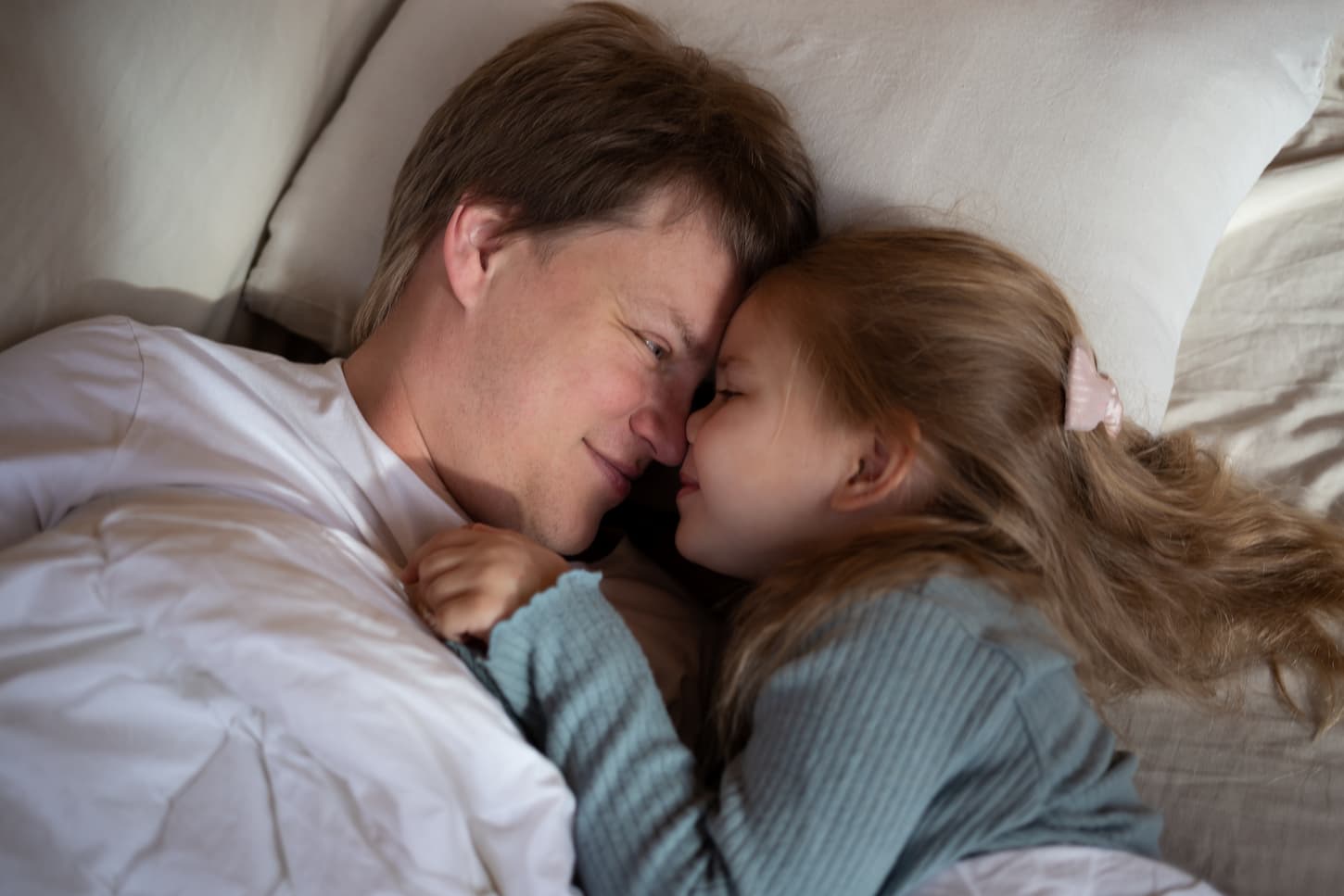
When Preschoolers Need Sleep Training
Ideally, a preschooler should already be sleeping well and through the night. However, there are many preschool-aged children that don’t. So if your preschool child hasn’t reached that “ideal sleep situation” just yet, know you aren’t alone.
After surveying hundreds and thousands of parents, the most common issues I see at this age are:
- multiple wakings at night.
- climbing into the parent’s bed. Many kids have achieved ninja-like skills at climbing into bed unnoticed.
- the bedtime routine can be another common issue as your preschooler begins to try to assert control – and refuse to sleep.
- refusing to take naps but still being a super cranky child later in the day.
Each of these issues can be successfully navigated, managed, and improved with dedicated sleep training.
Even so, sleep training a preschool-aged child introduces a few new variables. So yes, this age range is still a very common one for sleep training. Here are the most important factors to remember for preschool-aged children.
- You may want to start (or continue) reading about sleep training.
- It’s never too late to start sleep training.
- Choose an age-appropriate sleep training method to begin making small, subtle changes to your existing routines.
- Know that using a cry-it-out method will probably not work for most preschool-aged children.
- Most preschool-aged children no longer nap. But if yours does, know that nap sleep training is a separate issue from nighttime sleep training. This will depend heavily on your family’s schedule, bedtimes, and other factors.
- Getting better sleep is possible for everyone!
- As you sleep train or change the bedtime routine, evaluate the results. Make changes as needed – as directed by the results.
- Consider a fading or gradual approach, as it will have more success with this age group.
- Having an ideal sleep situation is still the goal. Getting there takes time.
- Some preschoolers will still have an unreliable schedule – they may still wake up a few times at night. Or they may vary in the number of naps they take each day. That’s okay. Adjust bedtime as needed for days when sleep isn’t as great.
- Sleeping through the night is more than possible.
- Reverse cycling should become a non-issue as preschoolers are able to eat enough calories during the daytime.
- Give your preschooler several parent-approved choices, like which pajamas to wear. Letting them have some autonomy (even if it’s within your set parameters) will make bedtimes much easier.
- Know that getting your child to stay in their bed will require a lot of work and effort – but it is possible! Many parents report success with the “thousand walks back to bed” method – and that it doesn’t take the full thousand walks. 🙂
Sleep training big kids is still very possible. And changing to a proactive mindset will be hugely beneficial not just in sleep training your children.
We have found that a proactive parenting mindset is possible.
To begin the transition, I recommend you start by reading “Parenting with Love and Logic” (by Foster Cline and Jim Fay). This book alone will work for most children and almost all preschool-aged kids.
For some kids, though, Love and Logic won’t be enough. If that’s the case, go read “The Explosive Child: a New Approach for Understanding and Parenting Easily Frustrated, Chronically Inflexible Children” (by Ross W. Green, Ph.D.). This book builds on Love and Logic – and makes all aspects of life easier and more fulfilling. Plus, there’s a whole lot less stress for everyone.
To check these must-have parenting books’ availability and current price on Amazon, click here (for Love and Logic) and click here (for Explosive Child).
Having a Plan B – and a way to implement it will be hugely beneficial for both your preschooler and your older children. And it’ll be a huge help as your child gets older.
When to Start Sleep Training School-aged Children
School-aged children should already be sleeping well and through the night – but that doesn’t always happen. So if your kid hasn’t reached that “ideal sleep situation” just yet, you aren’t alone.
The most common issues I see at this age are:
- multiple wakings at night, usually related to anxiety, stress, or insomnia.
- climbing into the parent’s bed. Yes, this still happens.
- bedtime routine issues that are usually related to power struggles.
Sleep training can still help – but at this age, it’s usually called “general parenting,” if only so your child doesn’t get offended.
Sleep training for school-aged or older children introduces a few new variables and factors to consider. Here are some of the most important ones.
- While you may want to read about sleep training, general parenting books will be far more helpful. At the end of this list, I’ll tell you the ones I recommend.
- It’s never too late to start sleep training or parenting your child.
- Choose an age-appropriate sleep training and parenting method to begin making small, subtle changes to your existing routines.
- Know that using a cry-it-out method will not work and it’s not appropriate. A gradual approach is more appropriate.
- Communication and cooperation are key at this age. It has to be a team effort and everyone needs to be on board or positive, lasting results will be impossible.
- Getting better sleep is possible for everyone! Having an ideal sleep situation is still the goal. Getting there takes time.
- Your child deserves a voice and a choice. They are old enough to have a say – or there will be problems (that will be out of your control).
Sleep training big kids is still very possible. However, it requires a change to proactive parenting and sleep training. In order to help you do that, we’ve found these books to be hugely beneficial – and they all build off of each other.
First, I recommend you read “Parenting with Love and Logic” (by Foster Cline and Jim Fay). That will give you a solid foundation. This book alone will work well for most children and most situations. It’s better to implement at a younger age, though it can work with many school-aged kids.
However, it won’t work alone for every child. So next go read “The Explosive Child: a New Approach for Understanding and Parenting Easily Frustrated, Chronically Inflexible Children” (by Ross W. Green, Ph.D.). This book, when used together with Love and Logic, can cover just about every parenting and sleep training issue.
That’s because together they’ll teach you how to proactively parent and sleep train with your child – so that everyone is on board with the plan and willing to work towards the family goals.
To check these must-have parenting books’ availability and current price on Amazon, click here (for Love and Logic) and click here (for Explosive Child).
Sleep training at any age is still very possible. It’s just going to take some effort on your part. But that’s okay – because you can do this.
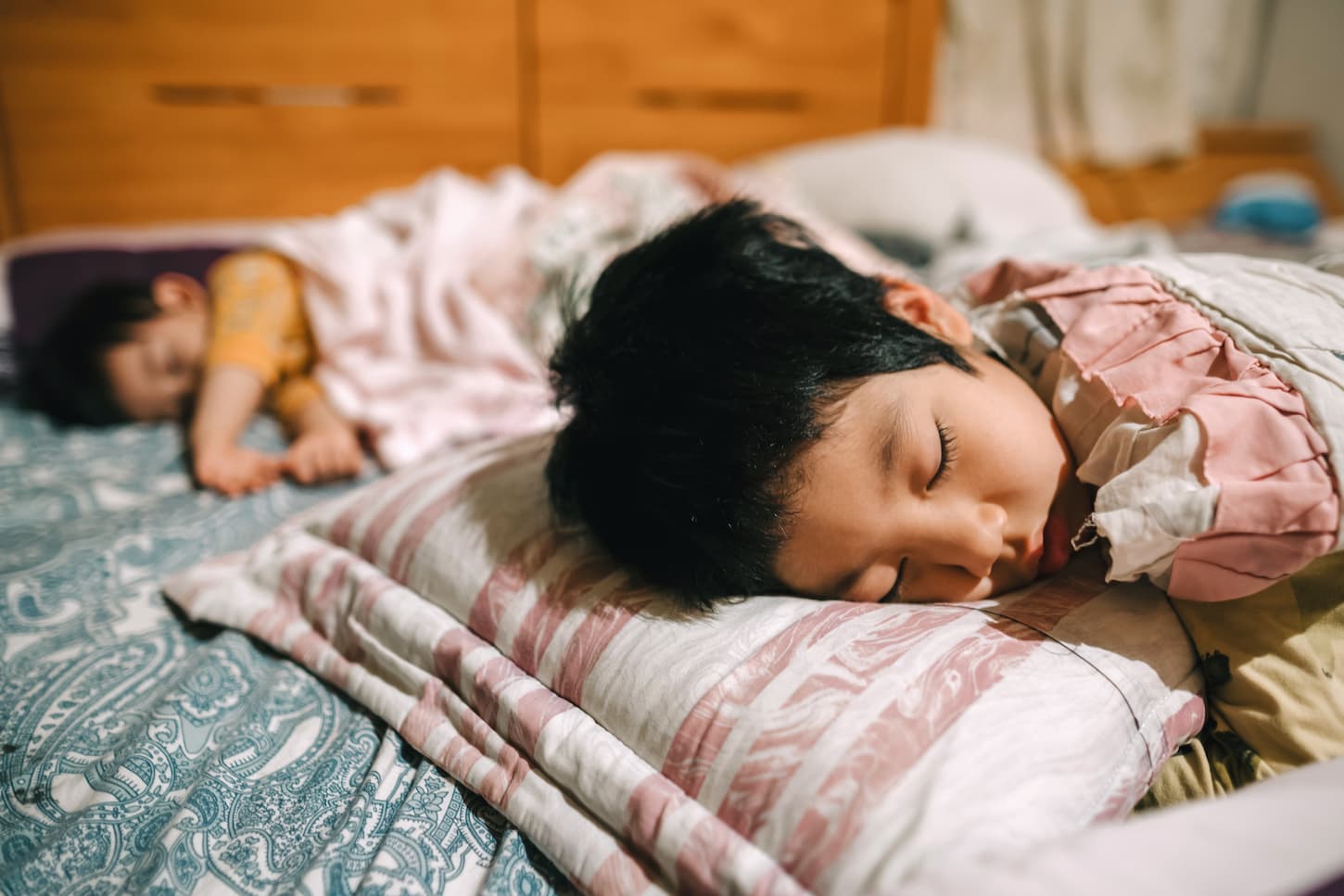
Related Questions
Do Babies Remember Sleep Training? Most children have a difficult time remembering specific events before 2-4 years of age. This is called childhood or infantile amnesia. At best, small snippets or episodic memories can be recalled.
What is Sleep Training for Toddlers? Sleep training for toddlers is using behavior-based sleep training techniques that have been adapted for a toddler. This can include explaining why sleep is important and allowing your toddler predetermined choices to make bedtime and sleep training easier while giving them a measure of autonomy.
